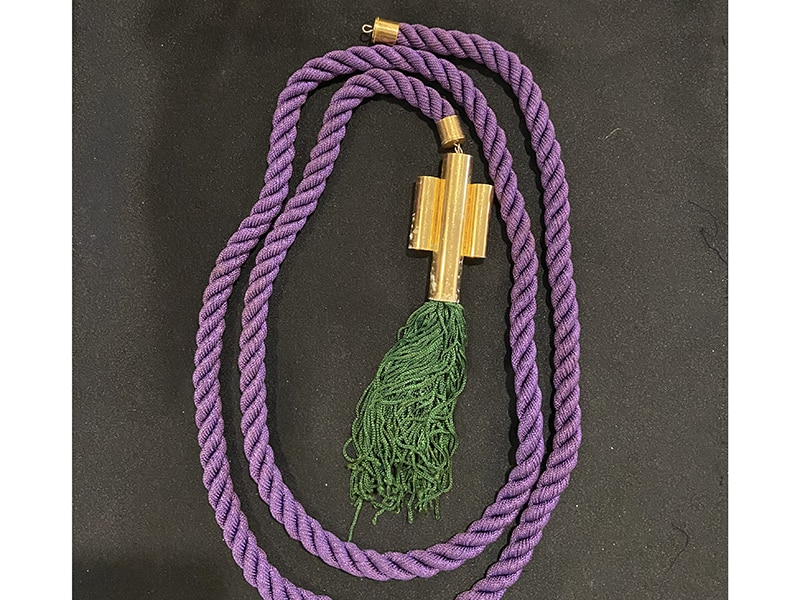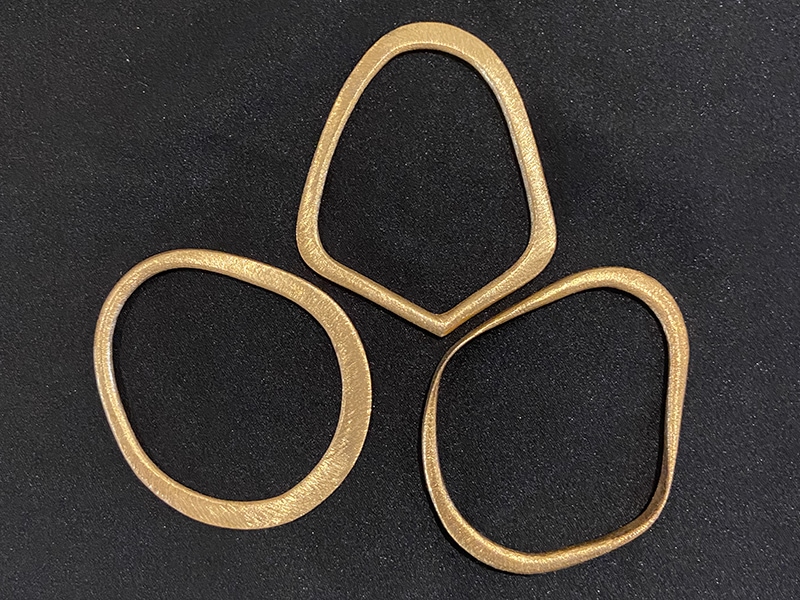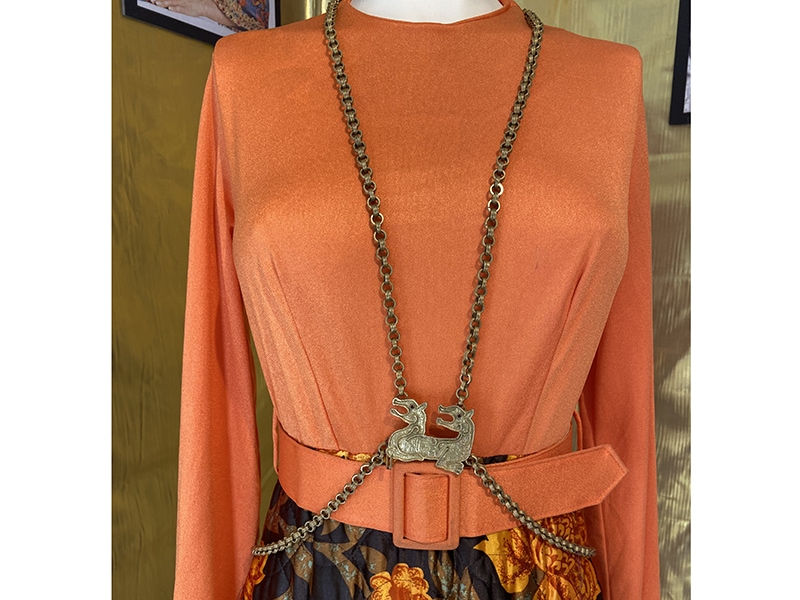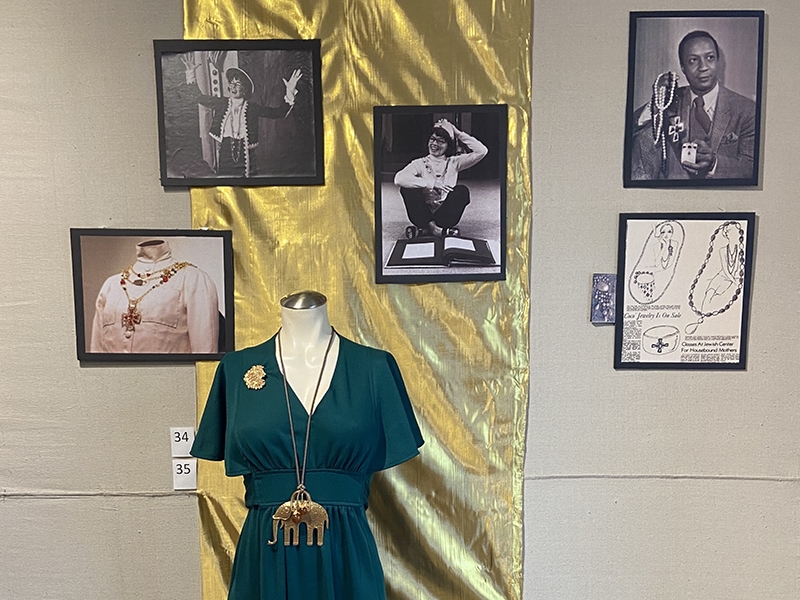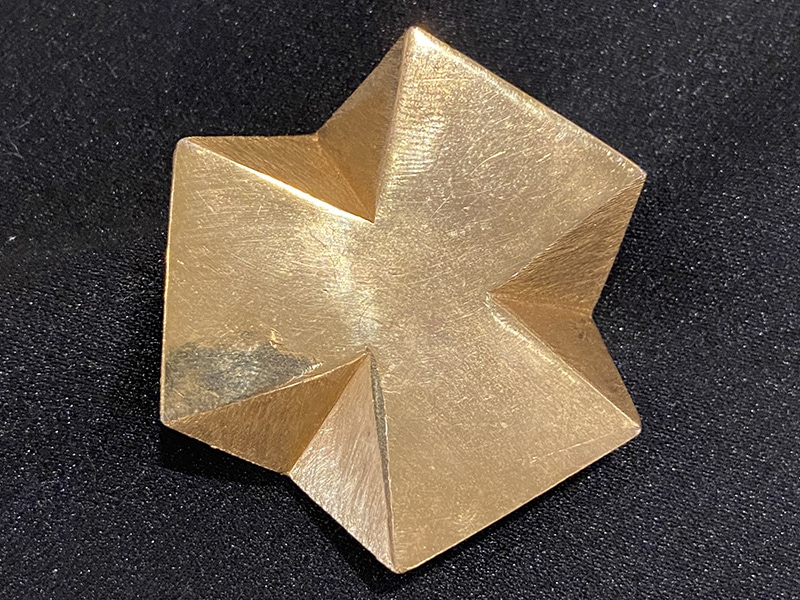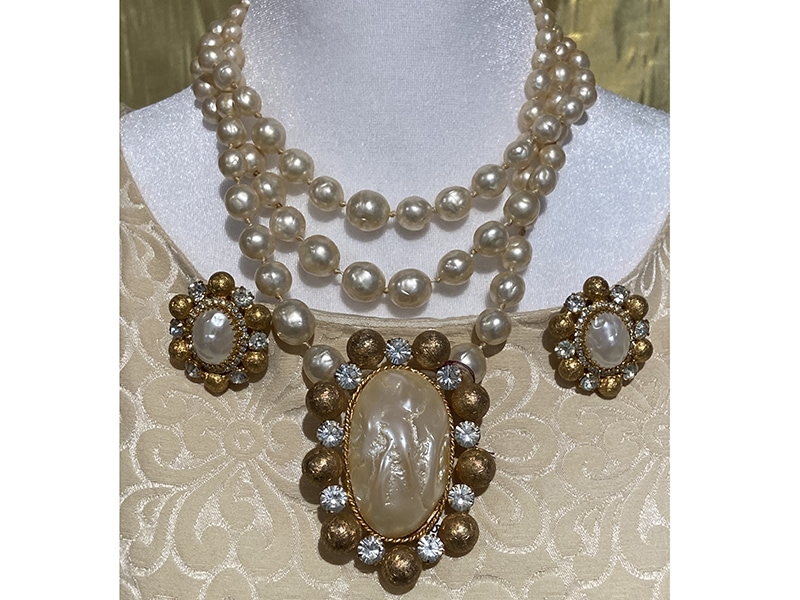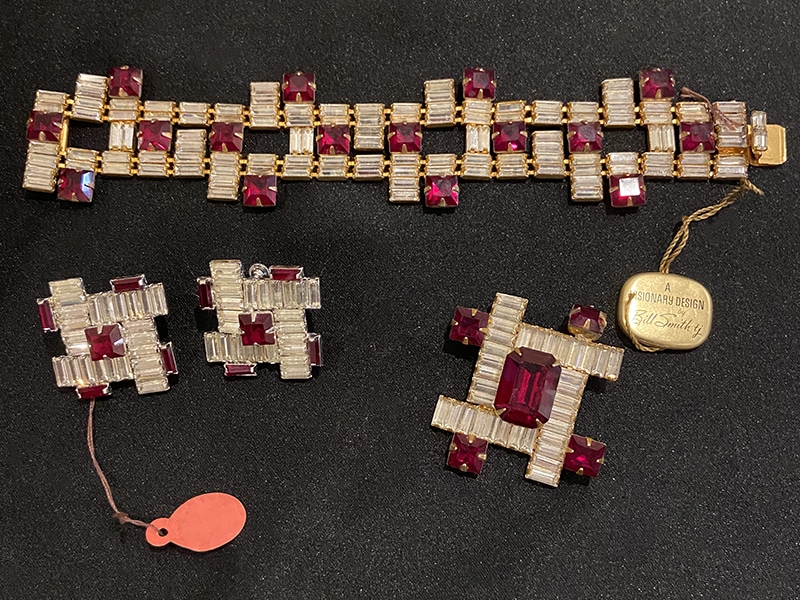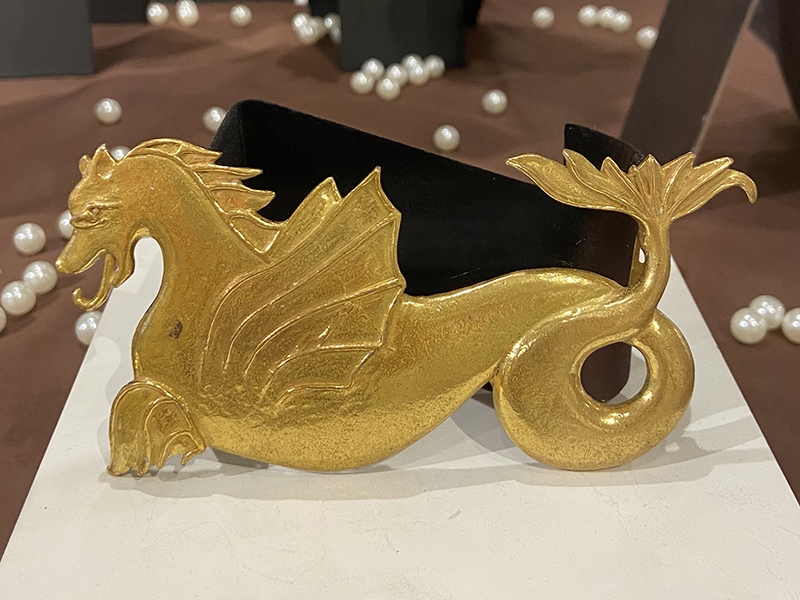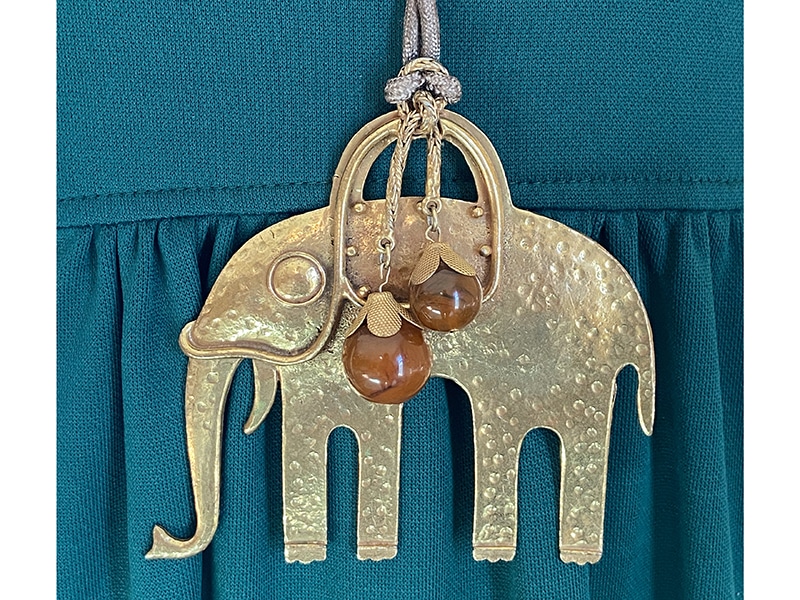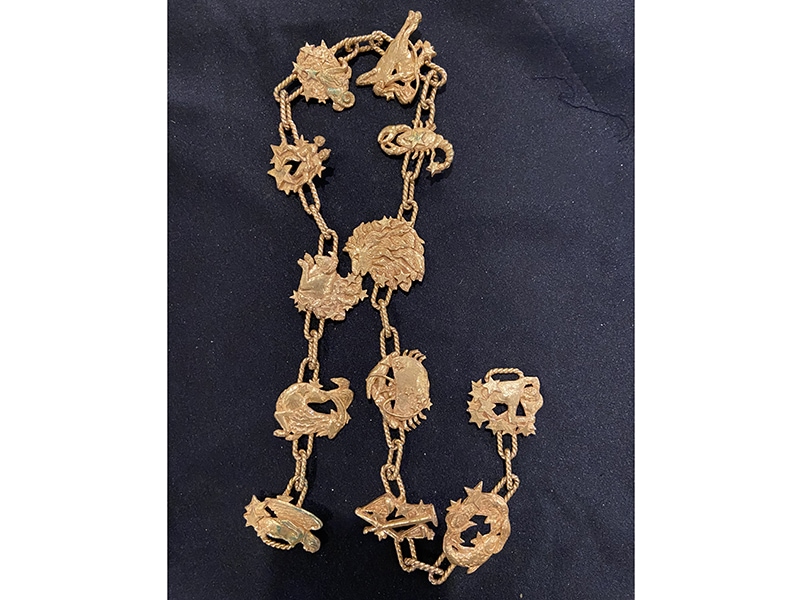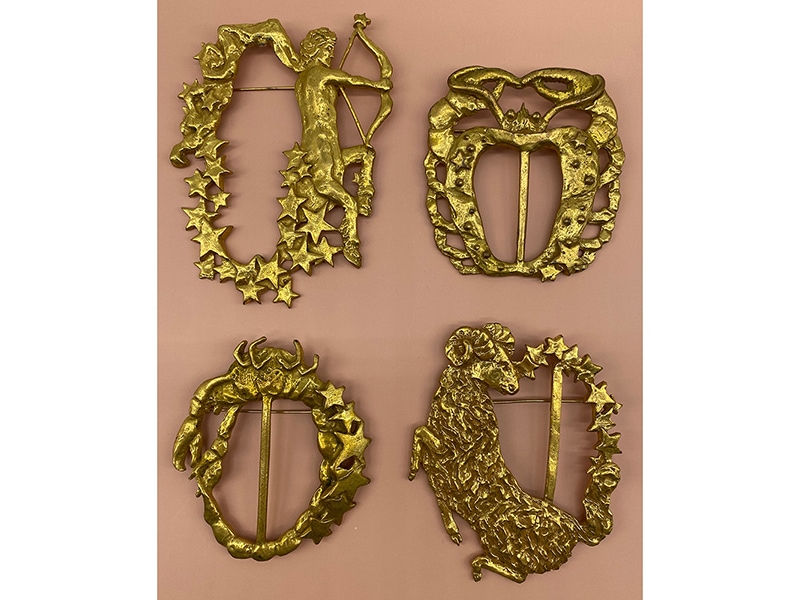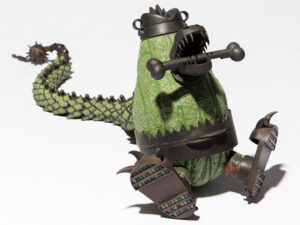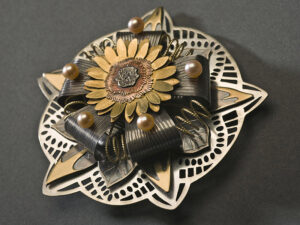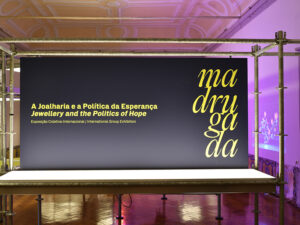- Bill Smith: Madison’s Visionary Jewelry Designer showed in Smith’s Indiana hometown
- It ran October 18–December 9, 2022, at the History Center of Madison, IN
- JoAnne Spiller, the Education Coordinator at the Jefferson County Historical Society (JCHS), organized the exhibition
In September 2022, I documented the life and work of Bill Smith for an article for Art Jewelry Forum. He had so sadly been forgotten in history. I hoped to start the process of rebuilding his legacy. However, my main goal was not just to write about Smith and his innovations with false pearls. I also wanted to see his talent captured and exhibited so a wider audience might see the beauty of his work. I am happy to see some of the first steps to bring Bill Smith to the world, via the JCHS’s exhibition on Smith and his work. I was delighted to talk with the curator of the show, JoAnne Spiller. We discussed the exhibition itself, and Smith’s complicated relationship with the community in his hometown.
Sebastian Grant: How did you first encounter Bill Smith and his work?
JoAnne Spiller: My interest in Bill began when we were putting together a list of “famous Madisonians” for a book I plan to write. We had a newspaper clipping from the Louisville Courier as well as a donation of his horse pendant and a couple of lapel buttons. Upon checking our paper and object archives, we realized we had nothing else on him. I’m not from Madison, so I had no idea that Bill Smith had been forgotten by his hometown.
What led to the JCHS’s decision to exhibit Smith’s work?
JoAnne Spiller: His story got under my skin. I started scouring all kinds of websites, museums, libraries, etc., to find everything I could about him. I’ve got a 4½-inch-thick binder of the research I’ve done on him over the past two+ years, and have spoken to a family member and a former co-worker about Bill’s life. One day, we discovered that we had a really impressive collection and enough information to tell his story. It then became my goal to have an exhibit so that our local community could rediscover the talents of one of their own.
Since Bill Smith’s work is rare, how did the JCHS acquire so many wonderful examples of his pieces in its permanent collection?
JoAnne Spiller: We ended up finding a few pieces of his jewelry fairly inexpensively online when we started putting his story together. That led to my (some would say) obsession with finding more pieces to build our permanent collection. I’m online for at least 30 minutes each morning checking various auction sites for pieces to add to the collection. My lofty goal is to have 100 pieces. I’m not sure I can attain that, especially if the word gets out again about his talent! The competition at auctions may become tough!
How did Bill Smith fit in with the community of Madison? Do you think this relationship is reflected in his work?
JoAnne Spiller: Bill grew up in an era of segregation. From what I’ve been told, Madison was a typical small town at the time: the pool was off limits, there were separate entrances for Black people, etc. The fact that he was able to go to an integrated high school was pretty amazing. Fortunately, he had an art teacher who encouraged him to pursue his goals. He worked hard to get into Indiana University (IU) and pay his tuition. His art teacher/mentor at IU saw enough talent in him that she encouraged him to go to New York.
He didn’t feel particularly welcome on his rare visits home, so he just quit visiting. He had a complicated relationship with his father. According to Briton Sargent, his great-niece, Bill’s father had initially disowned him for his homosexuality. They seem to have reconciled before Robert passed away. Madison has always been a small, conservative community in regards to race and sexual orientation. Bill wouldn’t have had many allies here and wasn’t close to most of his relatives.
His family relocated to Indianapolis in the late 50s, when he was in his mid-20s, and I guess he didn’t have the connections in Madison to keep him coming back. He was always trying to lift up other Black youth and was involved in the civil rights movement. Some of his work reflects the importance of his ethnicity. Others—like the hand-shaped jewelry he made for Georg Jensen—reflect his belief about hands that, as he said, “They caress or fight. They give life or kill. It’s the inevitable love-hate potential that I find fascinating.”
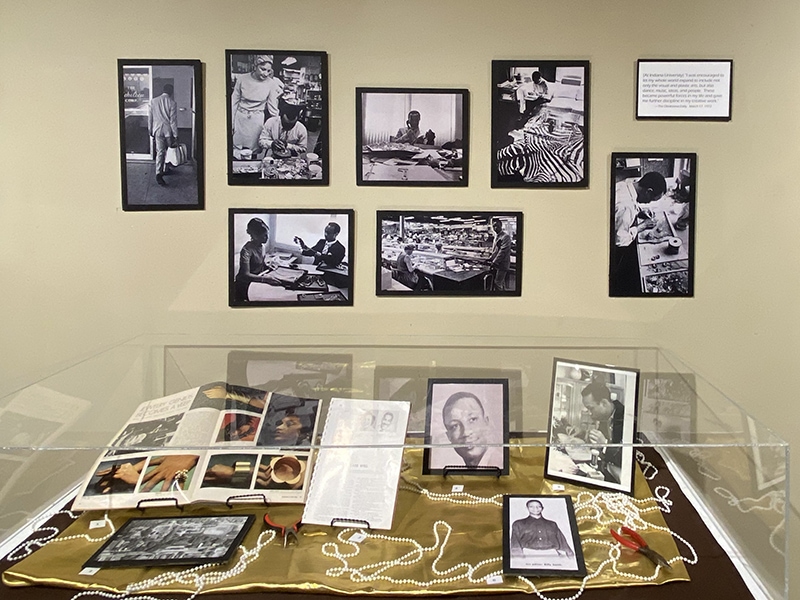
Why do you believe Smith’s work has fallen into obscurity?
JoAnne Spiller: That’s a tough question to answer. Bill passed away so many years ago that most people who worked with him or knew him are no longer around to ask what his last few years as a designer were like. His jewelry was really “in your face.” When you look at trends, designs go in and out of fashion quickly. Also, Bill didn’t have contracts to sign all of his work, so there are many collections out there that are attributed to him but not signed by him. It often takes a lot of investigation to corroborate a piece with a collection. I’m sure there are pieces out there that are his, but the owner probably has no idea who created them. His great-niece said he was still designing up until his death, but I am not sure if those designs ever made it to production.
What are some of your favorite pieces from the show?
JoAnne Spiller: It depends on the day! Some I am partial to because they are so beautiful: the peacock pendant. I feel connected to others because they were hard-won at auction: the sea dragon. We’ve been running a poll on visitors’ favorites. So far, the elephant medallion necklace is the winner.
Do you plan to travel the show to other locations where more people can see his work?
JoAnne Spiller: It is my hope that other museums will see this exhibit as something they would like to borrow from us. I’d hate to think that Bill’s story would only stay regional. The exhibit has gotten some really great press in the Louisville Metro area, so that’s a start!
What do you believe is the least a visitor should take from the show?
JoAnne Spiller: Aside from his obvious talent and business acumen? That someone from a small town in southeastern Indiana can make it big in the Big Apple, no matter their life circumstances. If you’ve got talent and drive, you can do anything you set your mind to.
